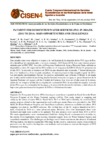Please use this identifier to cite or link to this item:
http://www.alice.cnptia.embrapa.br/alice/handle/doc/1027006| Title: | Payment for ecosystem water services (PES) in Brazil (2011 to 2014): main opportunities and challenges. |
| Authors: | PRADO, R. B.  COSTA, M.   LIMA, A. P. M.   SCHULER, A. E.   GUIMARÃES, J.   FIDALGO, E. C. C.   TURETTA, A. P. D.   PEDREIRA, B. C. C. G.   COUTINHO, H. L. C.   MONTEIRO, J. M.   CLEMENTE, E.   MARTINS, A. L.   OLIVEIRA, A. P.   |
| Affiliation: | RACHEL BARDY PRADO, CNPS; M. COSTA, PUC-RJ; A. P. M. LIMA, PUC-RJ; AZENETH EUFRAUSINO SCHULER, CNPS; J. GUIMARÃES, The Nature Conservancy; ELAINE CRISTINA CARDOSO FIDALGO, CNPS; ANA PAULA DIAS TURETTA, CNPS; BERNADETE DA CONCEICAO C G PEDREIRA, CNPS; HEITOR LUIZ DA COSTA COUTINHO, CNPS; JOYCE MARIA GUIMARAES MONTEIRO, CNPS; ELIANE DE PAULA CLEMENTE ALMEIDA, CNPS; ALBA LEONOR DA SILVA MARTINS, CNPS; ALINE PACOBAHYBA DE OLIVEIRA, CNPS. |
| Date Issued: | 2015 |
| Citation: | In: CONGRESO INTERNACIONAL DE SERVICIOS ECOSISTÉMICOS EN LOS NEOTRÓPICOS, 4., 2015, Mar del Plata. De la investigación a la acción: libro de resúmenes. Mar del Plata: GEAP, 2015. |
| Description: | Payments for Ecosystem Services (PES) focusing on water have expanded in Brazil from the Water Producer Program of the Water National Agency (ANA). This study aimed at mapping and verifying the status of water PES in Brazil from 2011 to 2014 and to identify the commonalities among projects related to the opportunities and challenges ahead. Data were provided by the TNC NGO, the Water Producer Program and Oasis Project websites, references available and others. PES mapping was done in ArcGIS10 software. We verified that, of the 42 projects identified in 2011, most remained in 2014 at a more advanced status. However, five were interrupted, three were finalized and eight were unable to be updated. Ten new projects were started from 2011 to 2014. The main opportunities were: environmental liabilities facing Brazil, environmental suitability by the current forest legislation, water scarcity, financial support from the Water National Agency and watershed committees. The challenges are the high cost of forest restoration, the absence of national PES legislation, the need to expand the PES range in the country, continuous source of payments to producers and the need to develop low-cost methods and indicators to monitor the impacts of PES in human well-being. |
| Keywords: | Pagamento por serviços ambientais Oportunidades Desafios |
| Type of Material: | Artigo em anais e proceedings |
| Access: | openAccess |
| Appears in Collections: | Artigo em anais de congresso (CNPS)  |
Files in This Item:
| File | Description | Size | Format | |
|---|---|---|---|---|
| 2015061.pdf | 233,31 kB | Adobe PDF |  View/Open |









